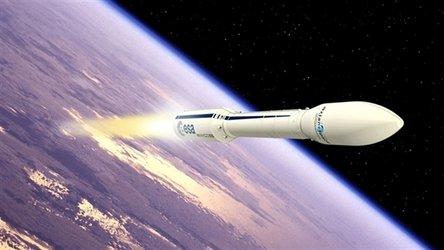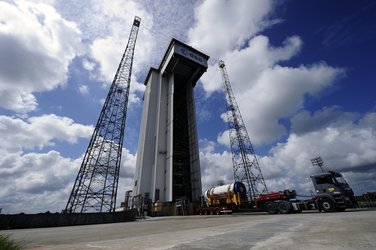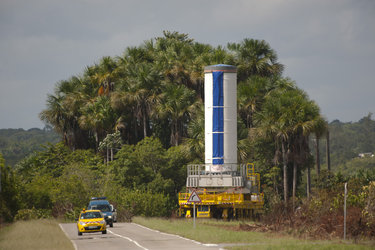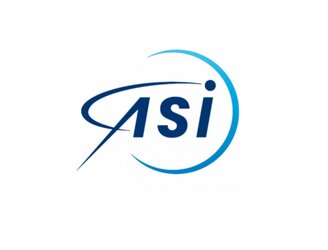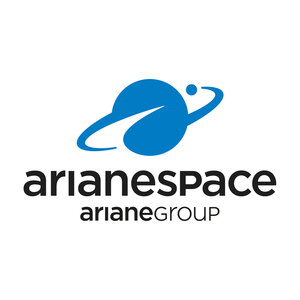Vega rocket ready for first flight
Final checkout of Europe’s new Vega launcher was completed last Friday, marking another milestone towards its maiden flight from Europe's Spaceport in Kourou, French Guiana.
The first Vega launch campaign began in November with the installation of the P80 first stage on the launch pad. The two solid-propellant second and third stages were added to the vehicle, followed by the AVUM – Attitude & Vernier Upper Module – liquid-propellant fourth stage.

All four stages have undergone final acceptance, including the testing of the avionics, guidance, telemetry, propulsion, separation pyrotechnics and safety systems.
These steps culminated on 13 January with Vega’s ‘synthesis control checks', where all systems were put into launch mode for the vehicle's final acceptance. This included pressurising the AVUM propulsion systems that actuate the thruster valves.
The rocket’s elements were switched on from the control bench to simulate the launch countdown. The onboard software then took over and simulated the different stages of a flight. The interfaces between the vehicle and the control bench were also tested.
The test review confirmed that everything ran as expected and that the launcher is ready for flight.
What’s next?

The ‘upper composite’ – the fairing and payload – will be integrated, followed by final checkout of the fully assembled launcher and the countdown rehearsal.
The first launch, VV01, is targeted for 9 February. It will carry nine satellites into orbit: the Italian space agency’s LARES and ALMASat-1, together with seven CubeSats from European universities.
This mission aims to qualify the Vega launch system, including the vehicle, its launch infrastructure and operations, from the launch campaign to payload separation and disposal of the upper module.
A flexible system

Vega is designed to cope with a wide range of missions and payload configurations in order to respond to different market opportunities and provide great flexibility.
In particular, it offers configurations able to handle payloads ranging from a single satellite up to one main satellite plus six microsatellites.
Vega is compatible with payload masses ranging from 300 kg to 2500 kg, depending on the type and altitude of the orbit required by the customers. The benchmark is for 1500 kg into a 700 km-altitude polar orbit.
More information on Vega and updates are now available on the new launch website here.















 Germany
Germany
 Austria
Austria
 Belgium
Belgium
 Denmark
Denmark
 Spain
Spain
 Estonia
Estonia
 Finland
Finland
 France
France
 Greece
Greece
 Hungary
Hungary
 Ireland
Ireland
 Italy
Italy
 Luxembourg
Luxembourg
 Norway
Norway
 The Netherlands
The Netherlands
 Poland
Poland
 Portugal
Portugal
 Czechia
Czechia
 Romania
Romania
 United Kingdom
United Kingdom
 Slovenia
Slovenia
 Sweden
Sweden
 Switzerland
Switzerland



























